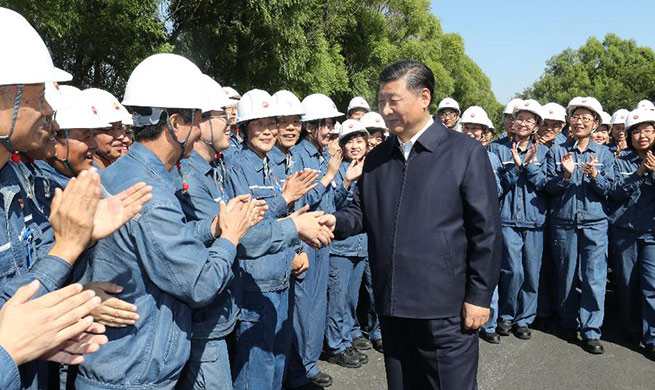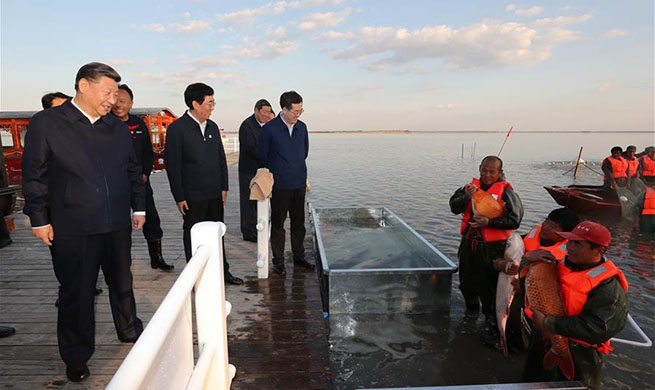WASHINGTON, Sept. 27 (Xinhua) -- American researchers may find a new material that allows more efficient conversion of sunlight into electricity than the traditional silicon, which can lead to next-generation solar cells in coming years.
The study published on Thursday in the journal Chem revealed the unique properties of these inexpensive and quick-to-produce halide perovskites.
"The construction of silicon solar cells is complex and hard to scale-up to the level that would be needed for them to generate even 10 percent of our total demand for electricity," said John Asbury, associate professor of chemistry at Penn State and senior author of the study.
The researchers focused on materials that could be processed using a technique called roll-to-roll manufacturing, a technique similar to those used to print newspapers that enables low-cost, high-volume production.
Halide perovskites seem to have a unique tolerance for imperfections in their structures that allow them to efficiently convert sunlight into electricity, according to Asbury.
The researchers used ultrafast infrared imaging technology to investigate how the structure and composition of these materials influence their ability to convert sunlight into electricity.
They found that halide perovskites had a unique ability to maintain their crystalline structure even while the atoms in their crystals underwent unusually large-scale vibrational motion.
"Such large-scale atomic motions typically lead to a loss of crystalline structure in other materials, creating imperfections," said Asbury.
"But with halide perovskites, researchers can chemically substitute electronically charged atoms in the material to tune the amplitudes of such atomic scale motions. This will allow us to improve the performance and stability of halide perovskite materials," said Asbury.
Asbury admitted that the material often contained toxic elements like lead and are not that stable to replace silicon solar cells. But it could guide the development of next generation perovskite materials that are more stable and that contain less toxic elements such as tin instead of lead.

















